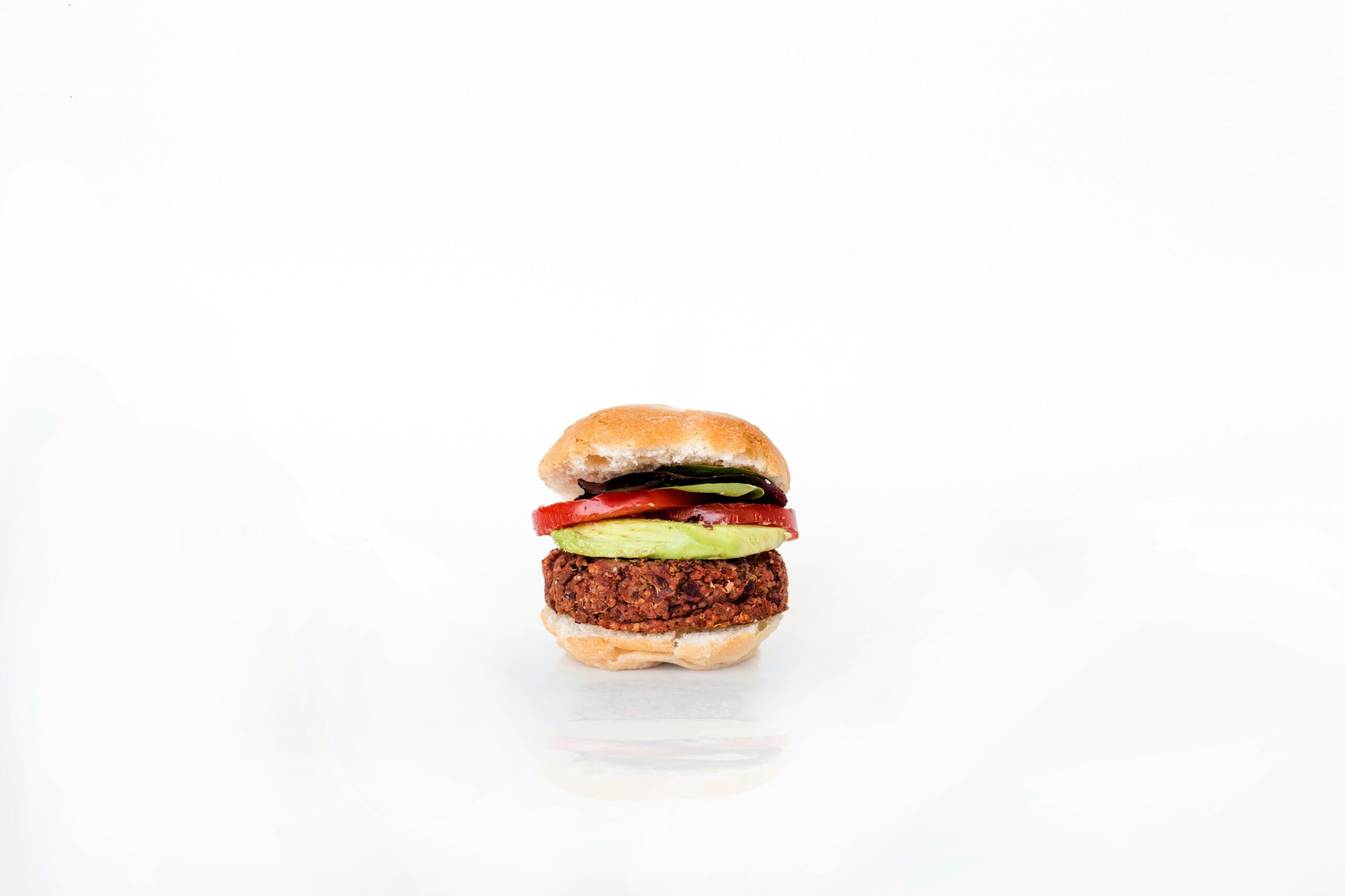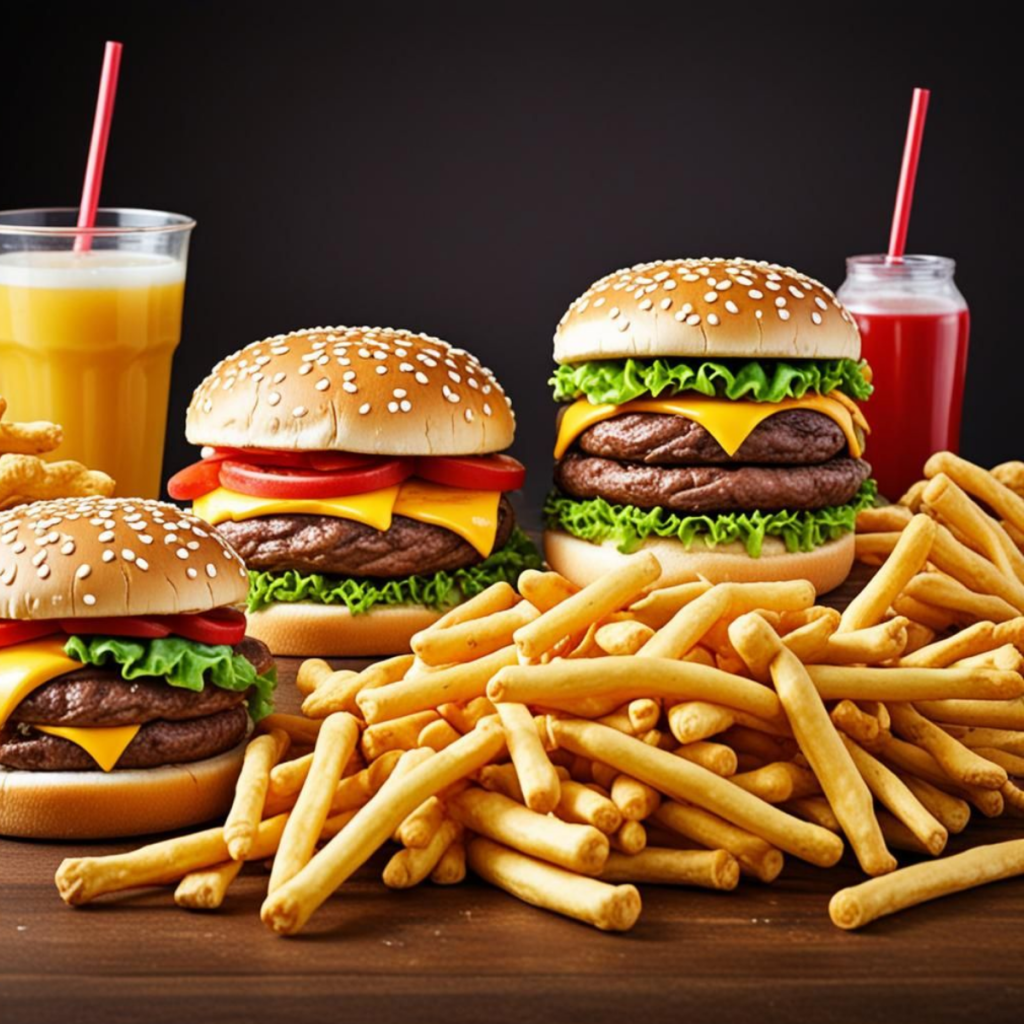
How to Avoid Processed Foods and Eat Clean: A Complete Guide in 2024

Understanding Clean Eating
Clean eating is a dietary approach that prioritizes the consumption of whole, unprocessed foods while minimizing the intake of items that have undergone significant processing. This philosophy encourages individuals to be mindful of their food choices, focusing on natural ingredients that are free from additives and artificial substances. By embracing clean eating, one seeks to nourish the body with foods that are as close to their natural state as possible, including fruits, vegetables, whole grains, nuts, seeds, and lean proteins.
The significance of clean eating extends beyond mere dietary preferences; it plays a pivotal role in enhancing overall well-being. One of the primary benefits associated with adopting a clean eating lifestyle is the improvement in energy levels. Whole foods are typically rich in essential nutrients, vitamins, and minerals, which can enhance metabolic function and provide sustained energy throughout the day. Additionally, these foods are often lower in added sugars and unhealthy fats, promoting better blood sugar regulation and reducing the risk of energy crashes. ACCESS YOUR FREE COPY OF COOKBOOK HERE

Moreover, clean eating can contribute to effective weight management. By focusing on unprocessed options, individuals are more likely to consume fewer calories while still enjoying satisfying and nutrient-dense meals. This dietary pattern tends to curb overconsumption, as whole foods often promote a sense of satiety. Furthermore, clean eating has been linked to various health benefits, including reduced risk of chronic diseases, enhanced digestive health, and improved mental clarity. It allows individuals to establish a healthier relationship with food, fostering mindfulness and intentionality in their eating habits.
As individuals incorporate clean eating into their lifestyle, they not only experience physical benefits but also cultivate a deeper awareness of the food they consume and its impact on their health.
SIGNUP HERE FOR MEDITATION CLASSES
Identifying Processed Foods
Understanding the distinction between processed foods and whole foods is critical for individuals seeking to adopt a cleaner diet. Processed foods are typically defined as items that have undergone various methods of alteration from their original state, whereas whole foods retain most of their natural characteristics. One of the primary ways to identify processed foods is to examine the ingredient labels closely. A good rule of thumb is to opt for products that contain a short list of ingredients, preferably ones that you can recognize and pronounce.

When evaluating labels, watch for common additives and preservatives that are often red flags for processed items. Ingredients such as high fructose corn syrup, artificial flavors, and colors, as well as preservatives like BHA and BHT, are frequently found in heavily processed foods. These ingredients may enhance the flavor or prolong shelf life but can also contribute to health issues when consumed in excess.

It’s also essential to recognize the difference between minimally processed and heavily processed foods. Minimally processed foods, such as frozen fruits and vegetables or whole grains, typically retain their nutritional value and are devoid of additional sugars and unhealthy fats. In contrast, heavily processed options often come in a package that contains a myriad of synthetic substances, thus diminishing their health benefits.
Another useful tactic for identifying processed foods is to be wary of marketing terms. Phrases such as “natural,” “low fat,” or “sugar-free” can be misleading, as products bearing these labels may still contain harmful ingredients. Ultimately, developing an understanding of how to read labels effectively will empower individuals to make informed dietary choices, steering them towards healthier, whole food options and away from highly processed varieties.
Benefits of Eating Natural Foods
Incorporating natural foods into one’s diet can yield numerous health benefits that contribute to overall well-being. One of the primary advantages is improved nutrition. Natural foods, such as fruits, vegetables, whole grains, and lean proteins, are rich in essential vitamins, minerals, and nutrients that are often diminished or absent in processed foods. This nutrient density supports optimal bodily functions and enhances overall health.
Another significant benefit of consuming natural foods is their higher antioxidant levels. Antioxidants play a crucial role in neutralizing free radicals in the body, thereby reducing oxidative stress. Foods that are minimally processed often contain higher amounts of antioxidants, which can help decrease inflammation and lower the risk of chronic diseases, such as heart disease, diabetes, and certain types of cancer. This anti-inflammatory effect is paramount for anyone aiming to maintain long-term health and vitality.

For athletes and individuals engaged in regular physical activity, natural foods can positively impact physical performance. High-quality proteins from natural sources contribute to muscle recovery and growth, while complex carbohydrates provide sustained energy. Additionally, the vitamins and minerals found in natural foods can enhance endurance and reduce fatigue, allowing for improved athletic performance. Choosing whole, unprocessed foods ensures that the body receives the precise fueling it needs to perform at its best.
Moreover, natural foods are generally lower in added sugars, unhealthy fats, and preservatives, making them a smarter choice when aiming for a balanced diet. This focus on clean eating not only nurtures the body but also fosters a healthier relationship with food. Overall, the consumption of natural, whole foods plays a pivotal role in enhancing nutrition, supporting physical performance, and reducing the risk of various chronic diseases. ACCESS YOUR FREE COPY OF COOK BOOK
Planning a Clean Diet

Creating a clean diet involves careful planning and foresight, allowing individuals to make healthier food choices and avoid processed foods. The first step in this process is meal prepping. Dedicate one day a week to plan and prepare meals. This practice not only saves time but also reduces the likelihood of opting for unhealthy convenience foods. Start by selecting a variety of recipes that emphasize whole, unprocessed ingredients. Aim for balance by incorporating proteins, healthy fats, vegetables, and whole grains in your meals.

Next, compiling a grocery list is crucial to sticking to your clean eating plan. List all the ingredients needed for your selected recipes, ensuring to include plenty of fruits and vegetables. When shopping, focus on the perimeter of the store where fresh produce and whole foods are typically located. Avoid aisles laden with processed foods. It is also beneficial to choose seasonal produce, which is often fresher and more nutritious. Seasonal fruits and vegetables also represent a cost-effective approach to grocery shopping, as they can sometimes be less expensive than out-of-season alternatives.
While planning meals, it’s important to ensure a balanced intake of nutrients tailored to individual dietary needs. For those focused on weight loss, prioritize lean proteins and plenty of fiber-rich vegetables. Individuals aiming to build muscle should emphasize protein sources and complex carbohydrates. Vegetarians should ensure adequate protein intake from sources like legumes, tofu, and nuts. Furthermore, consider incorporating healthy fats, such as avocados and olive oil, which can enhance flavor and satiety. Each meal should collectively contribute to your nutritional goals, promoting overall health and well-being. SIGNUP HERE FOR MEDITATION CLASSES
Healthy Eating Strategies for Beginners
Transitioning to a clean eating lifestyle can initially seem overwhelming, but by implementing effective strategies, new habits can be formed successfully. One of the most important approaches is to start small. Rather than attempting to overhaul your entire diet overnight, focus on making gradual changes. For instance, begin by replacing a few processed items in your pantry with whole food alternatives. This could mean swapping out white rice for quinoa or replacing sugary cereals with oatmeal. Such incremental steps are crucial for creating lasting dietary changes without feeling deprived.
As you begin to familiarize yourself with whole foods, strive to incorporate a variety of fruits, vegetables, proteins, and whole grains into your meals. Aim for a colorful plate, as it not only makes your meal visually appealing but ensures a broader spectrum of nutrients. This nutrient-dense approach is vital in establishing a strong foundation for your clean eating journey. Emphasizing whole foods will naturally enhance your meals and diminish the allure of processed options, which are often high in sugar, sodium, and unhealthy fats.
Identifying healthy snack alternatives is also a key aspect of this transition. When feeling hungry between meals, consider options like fresh fruit, nuts, or yogurt instead of reaching for chips or candy bars. Preparing snacks in advance can also be beneficial. For example, cutting up vegetables and storing them in easy-to-reach containers can encourage healthier choices. Additionally, exploring the various types of whole foods available may introduce you to delightful flavors and textures that could replace your cravings for processed products.

Ultimately, adopting clean eating habits is about making informed decisions and developing a positive relationship with food. Through consistent effort and mindful choices, even beginners can effectively transition toward a healthier lifestyle.
Eating Clean on a Budget
Transitioning to a clean diet can often seem challenging, primarily due to perceived high costs associated with fresh produce and whole foods. However, maintaining a clean eating regimen does not have to break the bank. By employing several strategic approaches, individuals can enjoy nutritious meals while adhering to their budget.
One effective method for cost-saving is buying in bulk. Purchasing staples such as grains, legumes, and nuts in larger quantities can significantly reduce the price per unit, making it more feasible to incorporate these items into clean meals. Many stores also offer bulk bins, allowing consumers to buy only what they need, thereby minimizing waste and managing portion control.
Another consideration is the choice between frozen and fresh produce. While fresh fruits and vegetables are often touted as the healthier option, frozen varieties can be just as nutritious—if not more so—due to their immediate freezing post-harvest, preserving their vitamin content. Moreover, frozen produce tends to be less expensive and has a longer shelf life, reducing the likelihood of spoilage and waste.
It is also crucial to leverage seasonal produce. Buying fruits and vegetables that are in season not only supports local agriculture but often results in lower prices and superior freshness. Farmers’ markets are excellent venues for acquiring seasonal produce, providing opportunities to connect with growers and gain insights into optimal preparation methods.
Meal planning around sales is an additional strategy that can aid in avoiding processed options. By taking note of weekly sales at local grocery stores, consumers can plan their menus to incorporate discounted, clean ingredients. This proactive approach ensures that meals remain diverse and interesting while adhering to budget constraints, ultimately promoting a healthy, clean eating lifestyle without financial strain.
Healthy Eating for Busy Lifestyles
Maintaining clean eating habits in a fast-paced world can be challenging, but with some strategic planning, it is entirely achievable. One of the key components to successful healthy eating is meal preparation. Dedicate a portion of your weekend to plan and prepare your meals for the upcoming week. By doing so, you can avoid the temptation to reach for processed foods when you’re short on time or feeling hungry. Start by creating a simple menu that includes nutritious recipes that you can batch-cook, such as quinoa salad, grilled chicken, or vegetable stir-fries. These dishes are not only wholesome but can also be made in bulk and stored in the refrigerator, providing you with meals ready to go at a moment’s notice.
Another effective strategy is to build a list of quick and easy recipes that require minimal cooking time and limited ingredients. Dishes such as omelets, smoothies, or whole grain wraps are excellent options. They can be prepared swiftly, taking no more than 15-20 minutes to make. These meals allow you to maintain your commitment to clean eating without sacrificing flavor or nutrition. Incorporating a variety of colors from fruits and vegetables will enhance the aesthetic and provide a range of essential nutrients in your diet.
It’s also important to have nutritious snacks readily available for your busy days. Consider preparing snack packs with items like nuts, yogurt, sliced fruits, or raw vegetables paired with hummus. These options are convenient, don’t require cooking, and can easily be taken on the go. Additionally, having healthy snacks at hand can help stave off cravings for unhealthy, processed foods, ultimately reinforcing your commitment to clean eating.
By integrating these meal prep ideas and convenience snacks into your daily routine, you will find that healthy eating can coexist with a busy lifestyle, making it easier to nourish your body with clean, unprocessed foods. SIGNUP FOR ONLINE YOGA FITNESS CLASS
Healthy Eating for Students and Travelers
Maintaining a clean eating lifestyle can be a challenge for students and travelers, given their busy schedules and frequent visits to unfamiliar places. However, with a few strategies, individuals can successfully avoid processed foods and make healthier choices. One of the fundamental practices is researching dining establishments in advance. Many restaurants nowadays provide online menus, which allow individuals to identify healthier options before arriving, thus reducing the temptation to fall back on convenient, processed meals.
In addition, when eating out, it is advisable to opt for simple dishes that are less likely to contain hidden sugars and unhealthy additives. Grilled proteins, salads with vinaigrette dressings, and whole grain options are often better choices. Always be mindful of portion sizes as well, since restaurant servings can be larger than standard recommendations. Requesting dressings and sauces on the side can help control the amount used, further supporting a clean eating approach.
For students and travelers on the go, having nutritious snacks available is crucial. Packing items like fresh fruit, nuts, yogurt, or whole grain bars can serve as convenient alternatives to packaged snacks. Additionally, preparing meals in advance, when possible, can help maintain a clean diet while juggling numerous commitments. Utilizing meal-prepping techniques can ensure that wholesome, easily accessible options are readily available throughout busy days.
When eating out or traveling, try to prioritize whole foods and avoid heavily processed snacks. Understanding how to read food labels quickly is also beneficial; aim for items with shorter ingredient lists that predominantly feature whole ingredients. By combining these strategies, students and travelers can embrace healthier eating practices, enhance overall well-being, and successfully avoid the allure of processed foods.
Incorporating Whole Foods into Family Meals

Making the shift to whole foods can be both enjoyable and accessible for families. One effective way to introduce whole foods into family meals is by transforming popular dishes into healthier versions. For instance, when preparing pasta, consider using whole grain or legume-based noodles, which offer increased fiber and protein compared to traditional options. Pair them with homemade tomato sauce, loaded with fresh vegetables like spinach, bell peppers, and zucchini, to enhance nutrition without sacrificing flavor. SIGNUP HERE FOR MEDITATION CLASSES
Breakfast is another opportunity to incorporate whole foods. Instead of sugary cereals, parents can opt for oatmeal made with rolled oats, topped with fresh fruits like bananas or berries, and a drizzle of honey or a sprinkle of cinnamon. This not only tastes better but also provides a nutritious start to the day. Smoothies made from whole fruits, leafy greens, and yogurt or a dairy alternative can be a delightful way to sneak in more nutrients while appealing to even the pickiest eaters.
Snacks can also be reimagined to include whole foods. Instead of reaching for processed snacks, families might explore options like sliced vegetables paired with hummus, fresh fruit, or homemade energy balls made from oats, nut butter, and seeds. These choices not only support health but also foster a sense of involvement among family members as they can participate in snack preparation. Encourage kids to pick their favorite fruits and vegetables during grocery trips, promoting ownership of their dietary choices.
Incorporating whole foods into family meals should be approached as a gradual process. Slow integration, alongside cooperation in meal planning and preparation, creates a positive experience for everyone. By emphasizing the joy of cooking and eating together, families can develop healthier eating habits while enjoying the journey towards a more wholesome diet.
ACCESS YOUR FREE COPY OF COOK BOOK

[…] hydration plays a significant role in weight management and can enhance overall health. Research indicates that drinking sufficient water can effectively […]
[…] Incorporating superfoods into your meals can often be simple and enjoyable. Whether you opt for smoothies with spinach and blueberries, oatmeal with chia seeds, or salads loaded with varied cruciferous vegetables, these foods are versatile and can easily complement a wide range of dishes. Their vibrant colors and unique flavors not only enhance meals aesthetically but also delight the palate, making healthful eating a pleasurable experience. […]